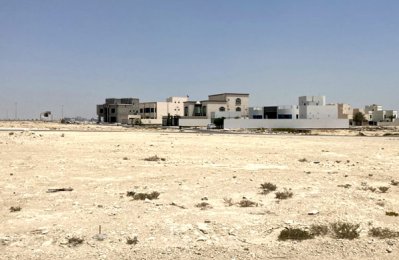Technology drives retail last-mile delivery in GCC: CRTKL
Shifting consumer behaviours result in a growing need for faster and cheaper online deliveries, which are driving the growth of technology for last-mile deliveries in the GCC, says a report by CRTKL, a global cultural agency.
More Stories
Shifting consumer behaviours result in a growing need for faster and cheaper online deliveries, which are driving the growth of technology for last-mile deliveries in the GCC, says a report by CRTKL, a global cultural agency.
CRTKL has highlighted the opportunities to adapt retail design in the region to meet the rising trend in e-commerce, in an industry-leading micro grants report.
The e-Commerce market growth within the GCC has been upscaling at a constant pace, with 64% of consumers in the region placing online orders at least once a week compared to 40% globally. Additionally, Euromonitor’s data shows that the retail mobile-commerce market of UAE is projected grow with a Compound Annual Growth Rate (CAGR) of 18.9% until 2025.
According to the report, consumers are browsing products online to have their purchases delivered at their front door, or easily picked up from a nearby area.
Online shopping
Advances in software engineering for online delivery platforms, as well as in urban infrastructure and logistics, have increased the efficiency and speed of deliveries with the pandemic intensifying the trend of online shopping.
Paul Firth, Associate Principal at CRTKL commented: “The region is perfectly positioned for last-mile delivery due to rapid urbanisation and excellent road infrastructure in the radius of retail. As hybrid shopping centres move towards experiences, certain areas can be reused as fulfilment centres for online sales with an increased emphasis on flexibility as health and wellness become increasingly important.
“At CRTKL, we are reimagining mixed-use by improving functionality for retail with increased accessibility for future technologies such as drones. We are committed to planet-positive design and enhancing connectivity with the implementation of innovative last-mile solutions key to an enhanced and convenient retail experience.”
The key factors driving the growth of technology for last-mile deliveries include:
Urban environment
Today more than half of the population live in urban areas with 1.5 million people added to the global urban population every week . Companies are responding to the global urban transition by changing the way humans consume goods and interact with shopping online to drive growth.
The last-mile is the most expensive and complex step of the supply delivery chain within urban infrastructure with the current options including bike couriers, droids, autonomous ground vehicles and drones. The use of robotics can make deliveries faster, allowing for more flexibility and reliability in how goods are delivered through smart integrated systems.
Retail design
Adjustments in retail store designs and delivery systems that support digital demand offer numerous advantages to consumers in the way they experience physical stores.
More companies are transforming their front-of-house spaces into “enhanced fitting rooms”, using technology and data from online orders.
Incorporating automated systems into their back-of-house area provides retailers the opportunity to spend more time with customers visiting the store. Retailers are disposing of a more compacted and customer tailored inventory based on online shopping trends with pick-ups and drop-offs becoming easier and faster through micro-fulfilment centres.
Logistics of e-commerce
Newly developed logistical technologies, such as autonomous vehicles and drone technology, call for a re-provisioning of existing infrastructure and urban elements such as sidewalk design. Using a smart logistics management platform, businesses can reduce last-mile delivery costs by 14% and increase deliveries per driver by more than 13% .
Middle East shoppers are increasingly influenced by sustainability issues with 83% of people in the UAE aware of their environmental footprint, and the impact of their purchasing choices on the planet. The advent of new technologies and increasing implementation in the Middle East will see an uptrend in faster deliveries and smart tracking to improve sustainability with different sectors advancing reduced carbon capabilities.
Drone ports
When envisioning ‘the mall of the future’, CRTKL have developed a Droneport concept to make last-mile delivery more compact and efficient, decreasing energy consumption and increasing range. An automated drone heliport accommodates various-sized drones and has the storage or racking of goods happening underground, then transported to the upper ring by a vertical conveyor to load the drone for distribution.
The Droneport of the future has an arch beam supporting the top of the tower instead of a typical vertical structure, making it both lighter and more structurally efficient which greatly minimises the need for human workings, creating a safer working environment. Malls in the Middle East are accessible from highways and have the potential for online retailers to adapt spaces for maximum fulfilment using elevated drones as the technology advances.-- TradeArabia News Service
Projects
















